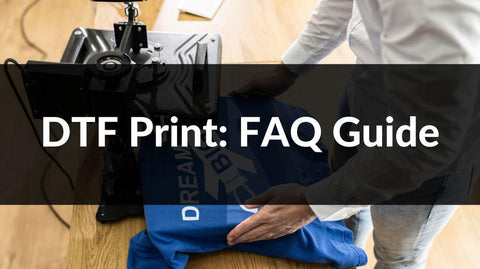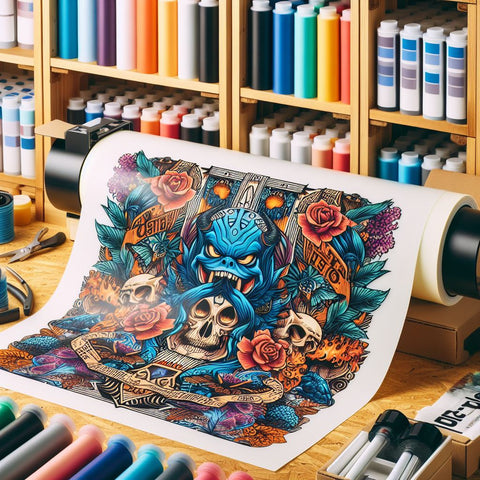In the dynamic world of printing technologies, Direct-to-Film (DTF) has emerged as an innovative method that is rapidly gaining popularity. DTF printing combines the best features of both Direct-to-Garment (DTG) and screen printing techniques, offering a versatile and efficient solution for a wide range of applications. In this article, we will delve into the intricacies of DTF printing, providing comprehensive answers to frequently asked questions and offering insights into its unique advantages.
What is DTF Printing?
DTF, or Direct-to-Film, is a modern printing technique that involves directly printing designs onto a special film using a compatible printer. This film is then transferred onto the desired substrate, such as fabric, using a heat press. Unlike traditional methods, DTF eliminates the need for a separate screen or transfer paper.
FAQs About DTF Printing:
How Does DTF Printing Work?
DTF printing starts with creating a digital design, much like in other printing methods. The design is then printed onto a transparent film using a DTF printer equipped with special UV-curable inks. After printing, the film is placed on the target material, and a heat press is used to transfer the design from the film to the substrate.
What Are the Advantages of DTF Printing?
Versatility: DTF printing can be used on a variety of materials, including cotton, polyester, and blends. It is suitable for a wide range of applications, from textiles and apparel to promotional products.
Full-color Printing: DTF printing allows for vibrant, full-color designs with intricate details. This is particularly advantageous for businesses or artists looking to create visually stunning prints.
Cost-Effective: DTF eliminates the need for screens or transfer papers, reducing setup costs. It is also efficient for short to medium print runs, making it cost-effective for small businesses.
Quick Turnaround: DTF printing offers a faster turnaround compared to traditional methods. The absence of screen preparation and the ability to print directly onto the film contribute to quicker production times.
What Materials Can Be Printed Using DTF?
DTF is compatible with various materials, including cotton, polyester, and blends. This makes it suitable for printing on T-shirts, hoodies, bags, hats, and more. The key is to choose the appropriate film and ink combination for the specific material.
Is DTF Suitable for Detailed Designs?
Yes, DTF printing is excellent for detailed designs, including fine lines and small text. The technology allows for high-resolution printing, making it ideal for intricate and complex artwork.
How Does DTF Compare to Other Printing Methods?
Versus DTG: DTF printing shares similarities with Direct-to-Garment printing, but it often boasts better wash durability and color vibrancy. Additionally, DTF is not limited by fabric color.
Versus Screen Printing: DTF eliminates the need for screens, making it a more straightforward and cost-effective option for short to medium print runs. It also allows for full-color printing without the need for multiple screens.
DTF printing represents a significant advancement in the world of printing technologies, offering a versatile, cost-effective, and efficient solution for businesses and artists. As the technology continues to evolve, it is likely to play an increasingly prominent role in the printing industry, providing a valuable alternative to traditional methods. Whether you are a small business looking to streamline your production process or a designer aiming for vibrant and detailed prints, DTF printing deserves careful consideration for its unique advantages.





Comments (0)
There are no comments for this article. Be the first one to leave a message!